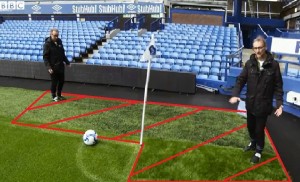 This blog title is provocatively paradoxical. The assumption is that something measured is something proved.
This blog title is provocatively paradoxical. The assumption is that something measured is something proved.This is not the case.
In practice, when we decide to define a fact, we then define what it is, how it is to be measured, then measure to verify.
In deciding the measurement, we simply place a judgment – our opinion of reality, onto something that isn’t there. For example:
The label on a blanket reads “50 per cent wool” What does this mean? Half wool, on the average, over this blanket, or half wool over a month’s production? What is half wool? Half by weight? If so, at what humidity? By what method of chemical analysis? How many analyses? The bottom half of the blanket is wool and the top half is something else. Is it 50 per cent wool? Does 50 per cent wool mean that there must be some wool in any random cross-section the size of a half dollar? If so, how many cuts shall be tested? How select them? What criterion must the average satisfy? And how much variation between cuts is permissible? Obviously, the meaning of 50 per cent wool can only be stated in statistical terms (Deming 1975).
Is it now becoming clear?
“Without theory (hypothesis), data are meangingless or nonexistent. There is thus no true value of anything: true value is undefinable operationally. There are, however, numerical values that people can use with confidence if they understand their meaning (for the tensile strength of a batch of wire, for example, or for the proportion of the labor force unemployed last month).” (Deming 1967).
The trick is to understand the meaning of numbers.
Not everything that can be counted counts.
Not everything that counts can be counted.
Just because you can measure something it does not mean that you can manage it. Many things are relatively unmeasurable, but important, like staff morale, contentment of customers (or even their excitement!). Mintzberg (2015) suggests that “when we hear the word ‘efficiency’ we zero in―subconsciously―on the most measurable criteria, like speed of service or consumption of energy. Efficiency means measurable efficiency. That’s not neutral at all, since it favors what can best be measured“
Deming was very clear on this point: “It is wrong to suppose that if you can’t measure it, you can’t manage it – a costly myth.” We can end up spending effort measuring and reporting the wrong things and also losing sight of the ball – forgetting the real purpose of our work.
So the first useful question about an issue of performance is:
“what do we know about this?”, then “what will help us to improve?”
Think about this next time you set a goal, or measure results…
Further Reading:
Deming W.E. (1967) Walter A. Shewhart, 1891-1967. The American Statistician, 21(2): 39-40
Deming (1974) On probability as a basis for action. The American Statistician, 29 (4): 146-152
Fellers G. (1994) Why Things go Wrong: Deming Philosophy in a Dozen Ten-Minute Sessions. Pelican Publishing
Mintzberg, H. (2015) What could possibly be wring with efficiency? Plenty. 9 September 2015. http://www.mintzberg.org/blog/wrong-efficiency












 “Hard work is only a small part of productivity” says Richard Farson in his short book ‘Management of the Absurd’. But this can’t be true can it? What about work ethic, effort and all those other good things? Farson’s argument is that we should distinguish between what it is that makes people work hard and what accounts for productivity. Our work organisations. Now, not wanting to just re-regurgitate Farson’s already well considered arguments, it is worth adding a fresh angle to emphasise what he has observed.
“Hard work is only a small part of productivity” says Richard Farson in his short book ‘Management of the Absurd’. But this can’t be true can it? What about work ethic, effort and all those other good things? Farson’s argument is that we should distinguish between what it is that makes people work hard and what accounts for productivity. Our work organisations. Now, not wanting to just re-regurgitate Farson’s already well considered arguments, it is worth adding a fresh angle to emphasise what he has observed.
